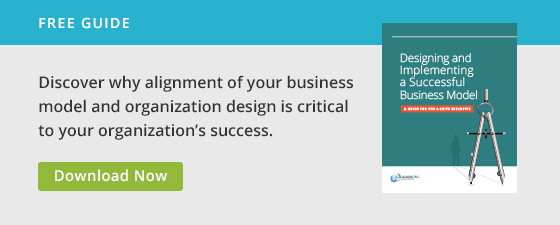Working virtually is no longer the wave of the future. Readily available technology has made virtual work environments ever more prevalent, both within and between organizations.
Virtual, networked organizations offer many advantages. For instance, holding a meeting on Zoom is cheaper, more convenient, and has a lower environmental impact than flying people in to meet face to face. Being able to hire someone capable of working some or all of the time off-site expands the pool of available talent. In some cases, working remotely can improve productivity, and result in more engaged team members.
But are virtual work environments always better? In our experience, no.
When virtual organization design doesn’t deliver on its promises
The introduction and widespread adoption of any new technology always presents unforeseen challenges. Virtual work environments are no exception. When undertaken without full understanding of how to effectively manage this type of work, it can result in inefficiencies that proponents of virtual networks don’t always recognize—even as they find themselves wondering, “Why aren’t we more productive?”
For example, a few weeks ago I met with a Silicon Valley client who is deeply involved in collaborative technology. The company develops and routinely uses virtual networking platforms and had a casual but intense culture typical of Silicon Valley: open design workspaces in which the prevalent modes of communication were instant messaging, collaboration spaces, video chat and when a meeting area was available (which was infrequently), short face-to-face huddles.
Despite the progressive feel and the undeniable convenience of many of these technologies, it struck me while working there how difficult it could be at times to engage in certain meaningful, strategic conversations. It reminded me of a story a colleague told me recently. He works in the construction space, and had hired some software developers to build a product for his business. He had been working with them on a virtual basis for months and the project was getting nowhere. He relates, “I finally decided to fly the project leader out and had him shadow me for a couple of days,” he said. “I’d get in my truck and the guy would say, ‘now I get what you want me to do.’ Prior to that he couldn’t visualize – it was just instructions with no context.”
Noticing a similar dynamic in the Silicon Valley company, I told them we needed to get together for three days. Fortunately, my direct client understood the need, but everyone on the team had trouble wrapping their minds around what would we ever do let alone accomplish. They wanted to know, “why in one room and why for three solid days? Why can’t we just do this in an hour, or set up a series of one-hour meetings?” There was tremendous resistance to meeting face to face, as well as resistance to meeting for a significant length of time.
However, we persevered and at end of the three days people raved. “It was so helpful,” they said. “We made so much progress,” and “I don’t know how we could have done this in a virtual way.”
The reason we needed three days face to face is because there was a line of thinking happening in our discussions that would have been lost, disrupted or undeveloped had we tried to do it in shorter snippets over time, or not been in a room where the stream of consciousness allowed us to build on our own thinking.
How to manage virtual networks successfully
We may someday figure out even more intuitive and integrated technologies that will allow us to accomplish what we did in a virtual way. But with today’s technology, committing to doing all work virtually comes with a very real risk of hamstringing yourself into a way of working that may not always help you achieve your goals.
Virtual collaboration tools and organizational settings can be very useful, the more complex and ambiguous the project, the more the dynamic requires continuous and possibly even face-to-face engagement. It’s interesting to note that even the people developing virtual environments acknowledge the importance of individuals and interactions, as evidenced by the 1st principle in the Agile Manifesto: “Individuals and interactions over processes and tools.”
How can you know in advance whether a virtual environment is appropriate for your organization and/or project? Start with this simple three-step virtual organization design process:
- Understand the work to be done. (Is there a singular decision to be made, or a complex series of decisions? Can people work asynchronously, or must they collaborate closely? How task-oriented is the work? How clear is the context of the organization – do you know what help is available to you and who on your team does what?)
- Determine if that work can effectively be done in a virtual or networked fashion.
- Plan for the work to be done in the optimal setting or way of working.
This is good a starting point, and I encourage you to explore it in your organization. However, it would be difficult if not impossible to explain how to manage virtual networks successfully through a simple blog. If you would like to deepen your understanding of the topic we will need a more dynamic venue.
Join me Monday, Sept. 25 for my webinar, Enabling Executives to Exploit the Value of Virtual Network Organizations.
Attend this free executive webinar to learn more about how to design, build, and operate effective organizations that enable work to happen in distributed ways.
This 60-minute session will focus on helping executives and practitioners:
- Understand the principles that govern the design of virtual, networked organizations
- Gain insights into how these principles can be applied in traditional organizations to enhance the productivity, marketplace success and employee engagement of employees
- Learn a framework for how connect and link organizations across traditional boundaries
- Exploit the creativity and energy of organization culture in virtual, networked organizations while maintaining productivity and accountability
This webinar is a must for:
- C-suite executives and senior business managers
- Heads of global and regional organizations
- HR leaders and OE/talent professionals
- Performance and change managers
- Anyone interested in effective virtual organization design






